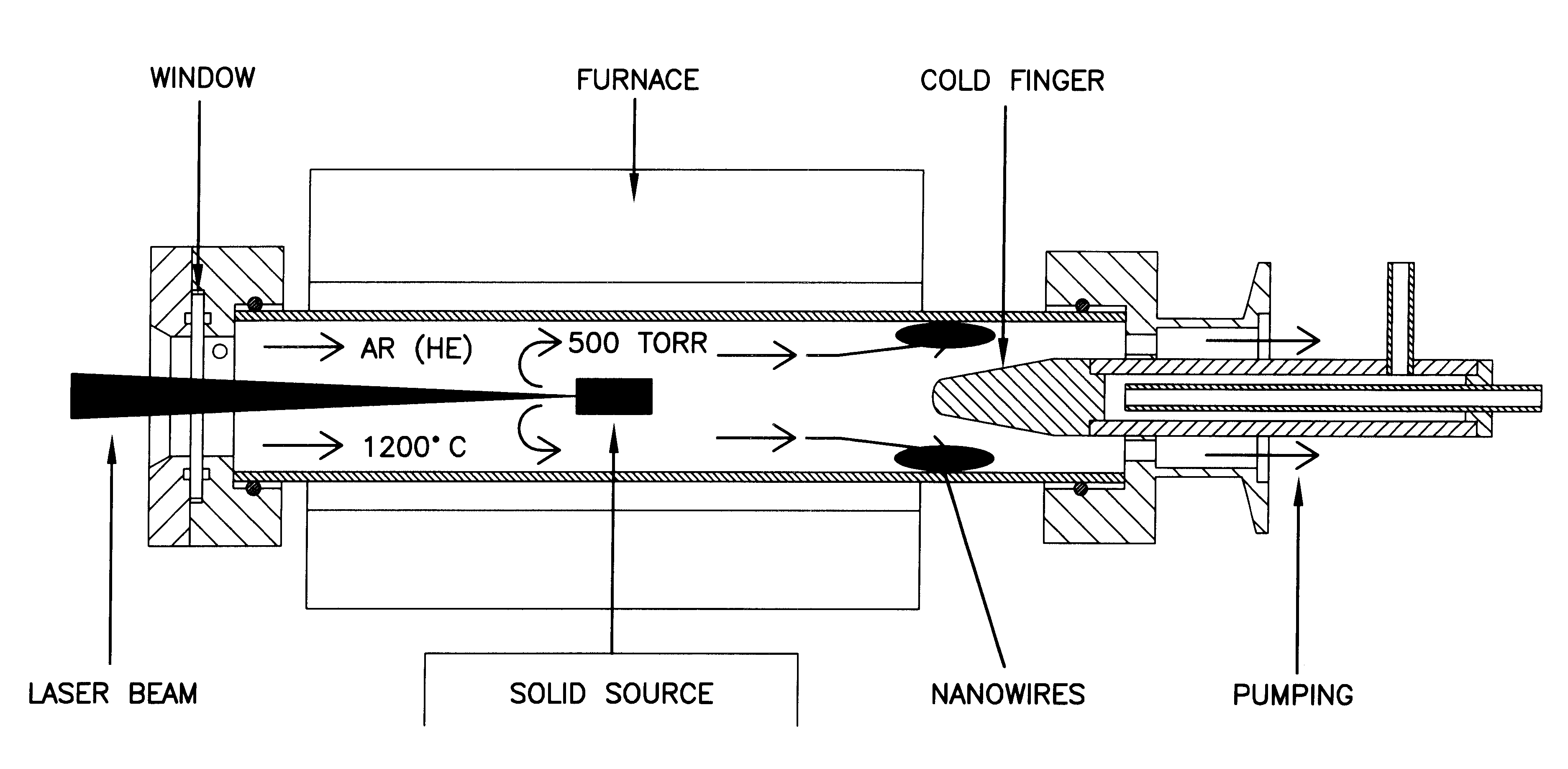Growth method for silicon nanowires and nanoparticle chains from silicon monoxide
a growth method and nanoparticle technology, applied in the direction of crystal growth process, polycrystalline material growth, chemically reactive gas, etc., can solve the problems of limited number of nanowire strands, low yield of production, and tedious methods, so as to reduce system energy, reduce surface energy, and enhance one-dimensional growth
- Summary
- Abstract
- Description
- Claims
- Application Information
AI Technical Summary
Benefits of technology
Problems solved by technology
Method used
Image
Examples
example 2
In this example, the same apparatus shown in FIG. 1 is used. The solid source is a mixture of SiO.sub.2 and Si (or Ge) in equal-molar ratio. The temperature around the solid source is about 1200.degree. C. Silicon nanowires grow at about 950.degree. C. The growth rate is slower than that in example 1. The growth time is about 10 hours. In this growth process, silicon monoxide vapor phase was generated by the following reaction in the solid source.
Si+SiO.sub.2.fwdarw.2SiO
and
Ge+SiO.sub.2.fwdarw.SiO+GeO
The temperature for this reaction is at least 1100.degree. C. The morphology and microstructure of silicon nanowires and nanoparticle chains are similar to that grown in example 1.
example 3
In this example, the apparatus, solid source and experimental conditions (temperature, pressure, etc.) are the same as that used in example 2. An Excimer laser (wave length=248 nm, frequency=10 Hz) is used to assist the generation of silicon monoxide vapor phase. The growth rate is increased and the growth time is shortened to 1 hour.
PUM
| Property | Measurement | Unit |
|---|---|---|
| pressure | aaaaa | aaaaa |
| temperature | aaaaa | aaaaa |
| temperature | aaaaa | aaaaa |
Abstract
Description
Claims
Application Information
 Login to View More
Login to View More - R&D
- Intellectual Property
- Life Sciences
- Materials
- Tech Scout
- Unparalleled Data Quality
- Higher Quality Content
- 60% Fewer Hallucinations
Browse by: Latest US Patents, China's latest patents, Technical Efficacy Thesaurus, Application Domain, Technology Topic, Popular Technical Reports.
© 2025 PatSnap. All rights reserved.Legal|Privacy policy|Modern Slavery Act Transparency Statement|Sitemap|About US| Contact US: help@patsnap.com


